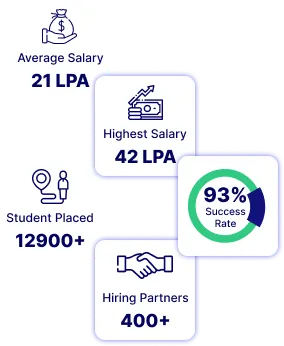Every
single day, businesses build up a colossal arrangement of figures that are
crucial to the spectacle. This huge arrangement of figures is known as data.
Business owners convert the data into insights via a process - business
analytics.
In this
article, we will discuss the definition of business analytics, its scope, and business analytics examples in a
detailed manner. Here, you will also come to know a few benefits of the
business analytics course in 2022.
Define Business Analytics
Business
analytics is a category of technologies and instructions used to solve business
problems. It uses several quantitative methods, analytical models, and data
analysis to offer solutions for businesses.
Businesses
rely on statistical analysis for driven decision-making. One can understand
business analytics as a domain comprising a structured and intrusive
examination of an organization's data. Growth in sales of an online retailer,
business planning, budget designing, market research, risk analysis, estimate
development, etc. are some of the popular business
analytics examples.
Today, the
scope of business analytics has
surged. Due to this, the demand for skilled analytics has also multiplied. This
is because success with business analytics depends on these analysts who can
understand advanced technologies and business data to drive useful insights.
Types of Business Analytics
There are
mainly 4 types of Business Analytics. You must consider each of the four types
to be highly complex. These types of business analysis help businesses to be
closer to attaining real-time insight applications.
Descriptive Analytics
Descriptive
analysis sums up a business's subsiding data. The main goal of descriptive
analysis is to summarize past actions and present scenarios within a business/organization.
The simplest form of business analytics is descriptive analytics. Because it
appoints data accumulation and data mining strategies.
Businesses
use descriptive analysis for making data easily accessible to business
members/teams. The investors, shareholders, marketing executives, and sales
managers are among the team who could easily reach out to data via descriptive
analysis. The best benefit of descriptive analysis is it helps specify the
efficiencies and drawbacks of a business. It even suggests an insight into
customer behavior too.
Diagnostic Analytics
A business
is determined by certain events and Diagnostic analytics uses probabilities,
and likelihoods to understand 'why' an event might eventuate. Diagnostic
Analysis explores past performance to discover the present insights within a
business.
This type
of Analytics calculates the factors that are influencing business trends. It is
used to display the main reason for events, and techniques like data pioneering
and data mining.
Predictive Analytics
As per the
name, predictive analytics is used to predict the odds of a future event within
a business or organization. This type of analytics functions with the help of
statistical models and Machine Learning techniques.
Businesses
rely on predictive analytics to enhance the result of descriptive analytics. It
even supports designing models that could forecast the likelihood of items.
Predictive analytics is believed to have more accuracy because it is executed
by Machine Learning experts.
Prescriptive Analytics
The fourth
type of business analytics is Prescriptive Analytics. It is helpful as it
offers solutions, answers, and suggestions to issues that are expected to arise
in the future. Prescriptive analytics also recommends which would be the next
best action to be taken within a business. Business owners use perspective
analytics to gain all approving outcomes as per a specific course of action.
The
prescriptive analysis is dependent on two aspects � an impressive feedback
system and ceaseless iterative analysis. It is helpful to demonstrate the
relationship between actions and outcomes.
Business Analytics Course: A Short Description
The scope of business analytics is quite
bright and hence you must think about applying for a business analytics course.
In a business analytics course, students learn computer simulation,
optimization statistics, and decision and intelligence.
The most
popular Business Analytics course is an MBA Business Analysis course. It is a 2
years course that operates via statistical analysis. This course helps a
business to enhance its performance and generate increased profit using past
data.
Business Analytics Salary: An Overview
Business
analytics is a job sector that is paid handsomely. If you want to build a
promising career in Business analysis, consider acquiring both analytical and
business skills. Generally, large-scale companies provide a high salary for a
Business Analyst. Business Analytics professionals with 5 years of experience
are paid an average salary of 8 to 9 lakhs INR per annum.
In India,
the average salary for 2022 � business analytics is INR 12.7 Lakhs across all experience
levels and skill sets. Moreover, advanced analytics/ predictive modeling
professionals enjoy an annual salary worth 14.5 Lakhs on the median.
Business
Analytics has diverse responsibilities. They focus on statistical data, big
data, and data visualization to sustain business resolution and implementation
of business changes.
As a
business analytic professional, you would have to foretell outcomes based on
insights and help businesses make informed decisions.
Business Analytics Examples
Business
Analytics finds a vast usage in almost every large-scale and small-scale
industry. A few real-world examples of business analytics are as follows �
designing marketing strategies, boosting business sales, enhancing financial
efficiency, and using predictive analytics. To become a business analyst one
has to be expertise in - Analytical and problem-solving, Communication, Basic
programing language - Python, Business structure understanding, & Cost-Benefit
Analysis.


